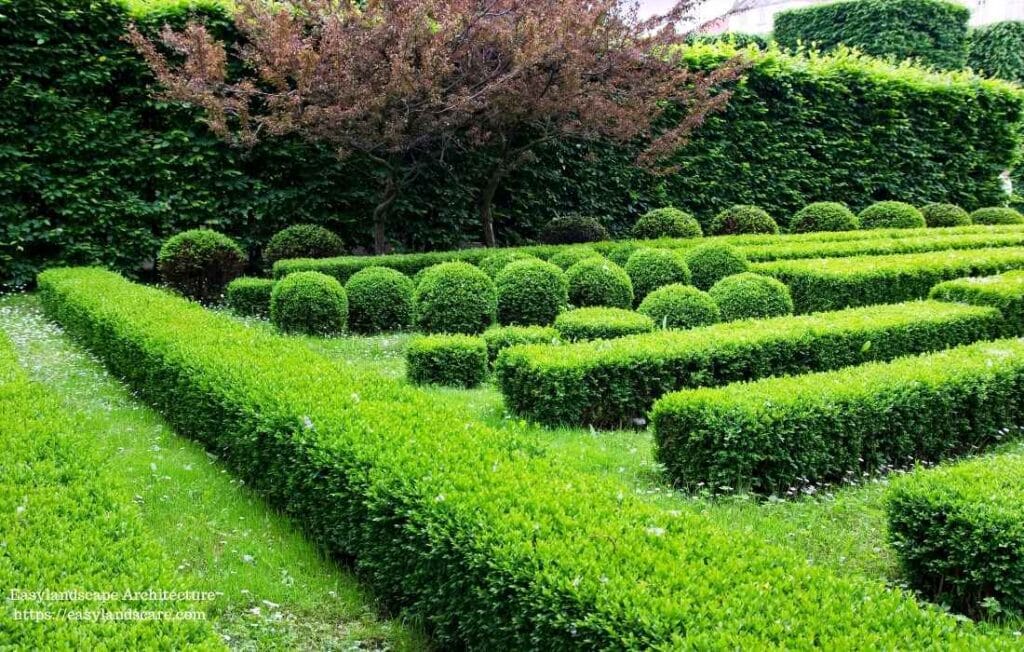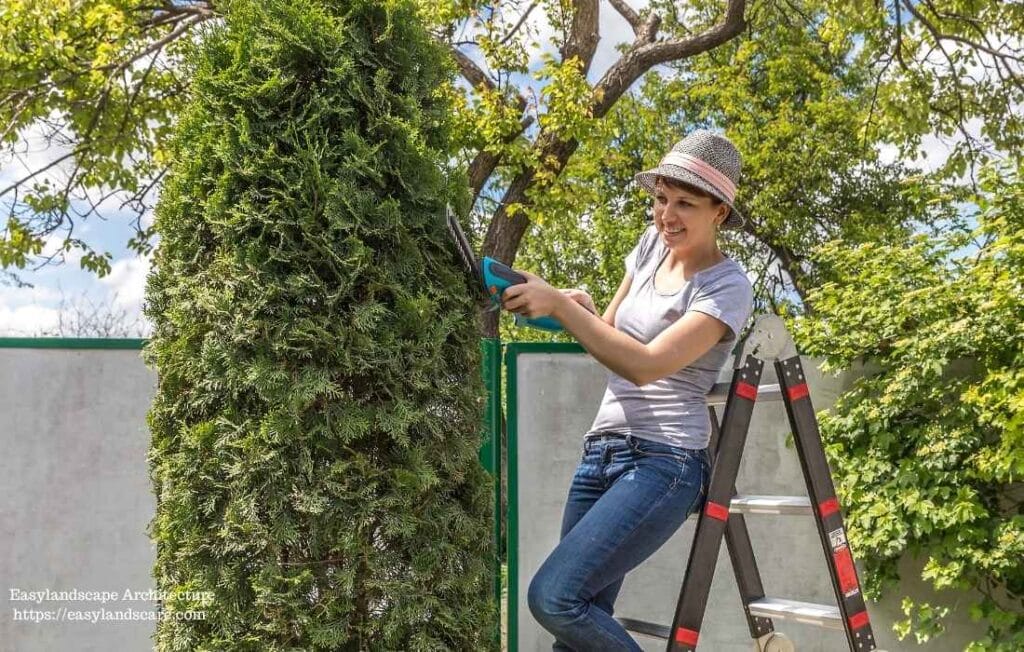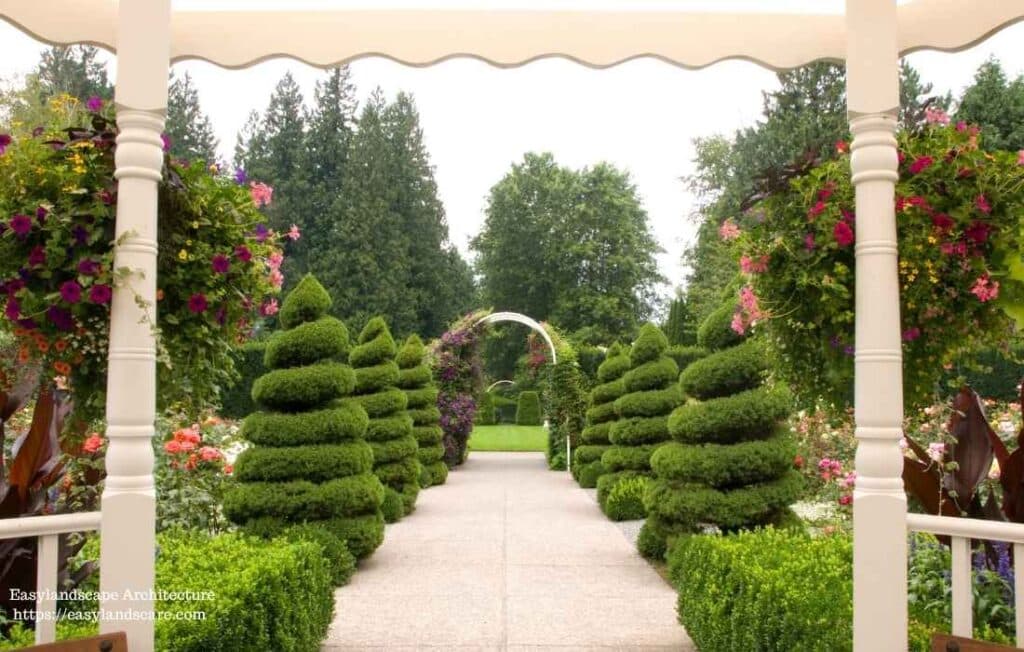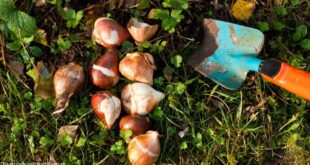Introduction the Topiary Art
Ever wondered how gardeners create those stunning, precisely-shaped trees and shrubs that look like living sculptures? Welcome to the fascinating world of topiary, an age-old horticultural practice that involves shaping and trimming plants into decorative, geometric, or imaginative designs. While you can certainly let your garden plants grow in their natural state, embracing topiary allows you to add a unique touch of elegance, structure, or even playfulness to your outdoor space. This guide will walk you through everything you need to know to introduce the art of pruning into your own garden.
What Exactly is Topiary? More Than Just Pruning

At its core, topiary is the practice of patiently clipping and training perennial plants (primarily woody trees and shrubs) to develop and maintain clearly defined shapes. It’s far more than just occasional pruning; it’s a dedicated process of guiding a plant’s growth over time. Leafy, dense-growing plants are particularly suited for this art form, as their foliage readily fills out the desired shapes, and regular trimming encourages the dense growth necessary for crisp outlines.

From Past to Present: The Everlasting Beauty of Topiary
Topiary isn’t a new trend. Its origins in ancient Egypt and Rome, where skilled gardeners carefully sculpted plants to embellish lavish villas and prominent public areas. It flourished in European Renaissance gardens, became a hallmark of formal French and Dutch styles, and has continued to evolve, finding its place even in contemporary garden designs. This long history speaks to its timeless appeal and the striking impact it can have.
Why Introduce Topiary to Your Garden? Benefits and Functions

Beyond the sheer aesthetic pleasure, topiary offers several benefits:
- Structure and Form: Topiary provides year-round interest and architectural structure, especially valuable in winter when other plants may be dormant.
- Focal Points: A beautifully sculpted topiary can act as a stunning focal point, drawing the eye and adding a sense of drama or elegance.
- Defining Spaces: Strategically placed topiary, especially when used in repetitive plantings, can:
- Create “green walls” or hedges: Clearly delineating garden rooms or borders.
- Act as windbreaks: Offering protection to more delicate plants.
- Guide pathways: Leading visitors through your garden.
- Versatility: From classic geometric shapes like balls, cones, and spirals to intricate animal figures, topiary can suit various garden styles, from formal to whimsical.
Getting Started: Choosing the Right Plants for Topiary

The success of your topiary largely depends on selecting suitable plants. Ideal candidates are typically evergreen, have small leaves or needles, tolerate frequent pruning, and possess a dense growth habit. Some popular choices readily available at nurseries include:
Boxwood (Buxus sempervirens)
The classic choice, perfect for intricate designs due to its small leaves and dense growth. Slow-growing but worth the patience.
Yew (Taxus baccata)
A classic choice in topiary, yew is highly resilient to heavy pruning and can thrive for hundreds of years. Its thick, dark green foliage provides a striking and elegant backdrop.
Privet (Ligustrum spp.)
A faster-growing option, suitable for larger shapes and hedges. Requires more frequent trimming to maintain its form.
Holly (Ilex spp.)
Known for its shiny evergreen leaves and, in many varieties, vibrant berries that add seasonal interest and visual appeal. Many varieties are suitable for shaping.
Laurel (Laurus nobilis)
Bay laurel is well-suited to classic plant forms and can be used for culinary purposes too.
Cypress Varieties (e.g., Lemon Cypress – Cupressus macrocarpa ‘Goldcrest’, Thuja spp.)
Offer different textures and colors. Lemon cypress brings a vibrant chartreuse hue and a pleasant scent. Thuja (Arborvitae) is often used for spirals and cones.
Myrtle (Myrtus communis)
A fragrant evergreen with small leaves, suitable for smaller, detailed topiaries in milder climates.
Viburnum (some species)
Certain viburnums with smaller leaves and a dense habit can be trained.
Tip: When starting, you might consider purchasing pre-trained or partially shaped plants. This gives you a head start and allows you to focus on maintenance and refinement.
Essential Tools for the Aspiring Topiary Artist

Having the right tools will make the shaping and maintenance process much easier and more precise:
- Shears: These are the most crucial tool. Look for sharp, high-quality hand shears with short blades for precise cutting.
- Hedge Shears: For larger surfaces and initial shaping of bigger plants.
- Pruning Saw or Loppers: For removing thicker branches that shears can’t handle.
- Secateurs (Hand Pruners): For general pruning and tidying.
- String and Stakes/Canes: To create guidelines for geometric shapes.
- Wire or Topiary Frames (optional): Especially useful for beginners or complex shapes. These frames guide your pruning.
- Gloves: To protect your hands.
- Level (optional): For ensuring geometric shapes are perfectly horizontal or vertical.
Interested in a more detailed guide on tree pruning tools? Click the title to read our article ‘The Best Tree Pruning Tools to Keep Your Trees Healthy.‘
Basic Topiary Techniques: Shaping Your Living Sculptures

- Start Simple: For beginners, classic shapes like balls, cones, or cubes are recommended.
- Plan Your Shape: Visualize the final form. For geometric shapes, use stakes and string, or a wire frame, as a guide.
- Initial Pruning: Roughly cut the plant to the basic desired outline. It’s better to prune less than too much initially; you can always remove more later.
- Refine the Shape: Use sharp pruning shears for detailed shaping. Step back frequently to assess your work from all angles. Rotate the plant if it’s in a container.
- Regular Trimming: This is key to maintaining a crisp shape and encouraging dense growth. The frequency depends on the plant species and growth rate (typically 2-3 times during the growing season). Prune fresh growth to maintain the plant’s established form.
- Patience is a Virtue: Topiary is a marathon, not a sprint. Achieving complex shapes can take several years.
Positioning Your Topiary: Solitary Stars or Harmonious Hedges

How you position your topiary depends on your garden’s size and the effect you wish to achieve:
- Solitary Specimens: Using a single, striking topiary as a standalone feature creates a powerful focal point. This is particularly effective in smaller gardens where one exceptional piece can make a significant impact. It’s also ideal for showcasing more complex or whimsical designs.
- Repetitive Plantings:
- Formal Hedges: A row of identically shaped topiaries (e.g., spheres on stems, or a neatly clipped hedge) creates a strong sense of order and formality.
- Path Lining: Pairs of topiaries can flank an entrance or line a pathway, adding a touch of grandeur.
- Knot Gardens & Parterres: Intricate designs often feature low, clipped hedges of topiary plants.
Caring for Your Topiary Masterpieces
- Watering: Like any garden plant, topiaries need adequate water, especially during dry periods and if grown in containers (which dry out faster).
- Feeding: Regular feeding with a balanced fertilizer during the growing season will support healthy growth and lush foliage.
- Pest and Disease Control: Regularly inspect your plants for any signs of pests or diseases and treat them promptly. Ensuring proper air circulation around the plant helps reduce the risk of problems.
- Winter Protection: In colder climates, some pruning plants (especially those in containers) may need protection from harsh frost or winds.
Topiary for Every Garden

- Small Gardens: Don’t be discouraged if you have limited space! A single, well-chosen topiary in a pot or a small, neatly clipped hedge can add immense charm. Vertical shapes like spirals or cones can also make the most of small footprints.
- Large Gardens: Larger spaces allow for more ambitious topiary schemes – from grand avenues of identical trees to entire “rooms” defined by sculpted hedges, or a collection of individual, elaborate sculptures.
Unleash Your Creativity
Topiary is a rewarding art form that combines gardening skill with artistic vision. Whether you opt for ready-made forms or decide to train your own plants from scratch, the addition of topiary can elevate your garden from ordinary to extraordinary. Start with a simple project, learn as you go, and enjoy the process of shaping your own living sculptures.





